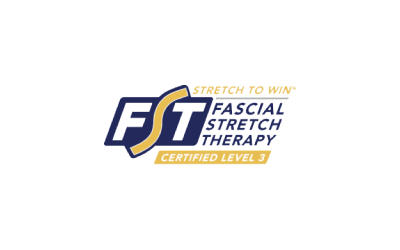Join the conversation.
Welcome to Part 2 of 3 of Pain Matters, where Dr Nick Penney provides some clarity on the terminology used in relation to pain.
What is Sub-Acute Pain?
The term sub-acute pain is also used to describe how long we have experienced the pain, not how intense or severe it is.
Sub-acute pain is defined as pain that has been present for between 8 and 12 weeks since onset.
The treatment and advice for sub-acute pain is distinct from either acute or chronic pain.
This is important, as all too often this distinction is missed, and the wrong treatment and advice may just make things worse!
Recognising the Unique Window of Opportunity
In the 8-12 week period of time since the pain first started we may notice that the pain is starting to interfere with our sleep, mood or enjoyment of life generally.
It starts to wear us down, and we can begin to ‘fear the worst’.
If we are, or have previously struggled with anxiety or depression they can start to complicate our recovery at this point. As may other life stress or work related problems we are experiencing at the time.
Pain is both a sensation AND an emotional response.
Understanding sub-acute pain and what ‘best practice’ for its managment it is critically important, as it is recognised as a unique window of opportunity to turn things around before the pain becomes much more complicated.
Even a couple of appointments can make a huge difference!
Who Is Dr Nick Penney

I originally graduated as an osteopath from The British School of Osteopathy (now University College of Osteopathy) in 1980. Completing an internationally recognised course in sports medicine in 1981, I was appointed Honorary Osteopath to both the England Men’s Volleyball Team and Otley RUFC in conjunction to practising with my lifelong friend and mentor, Professor Kim Burton.
Emigrating to New Zealand in 1989, I opened a practice in Howick, Auckland and was elected as the president of the New Zealand Register of Osteopaths in 1991. At the time we were working to achieve statutory recognition and regulation of osteopathy as well as setting up the country’s first full time osteopathic degree at UNITEC. My role also included working on the first New Zealand evidence-based clinical practice guidelines for the management of low back pain with ACC and the National Health Committee. These guidelines were the first to recognise how the stress of our everyday lives, and past experience, can influence recovery from low back pain. This led to my decision to enhance and expand the knowledge and experience gained from my first 20 years in practice, whilst in Australia gaining my PhD in Musculoskeletal Medicine at the Centre for National Research on Disability and Rehabilitation Medicine, Faculty of Medicine, University of Queensland, Australia.
My research was based around the multitude of factors (biomedical, psychological and social) that intertwine to create and maintain pain, particularly low back pain. During this time, I was also appointed onto the Australian expert panel on low back pain, and the steering committee of the Australian Acute Musculoskeletal Pain Guidelines Group, where we developed and published extensive evidence based clinical practice guidelines for the management of acute musculoskeletal pain.
On our return to New Zealand, my wife and I set up Integrative Pain Care, combining our knowledge and experience, integrating them into a biopsychosocial understanding of pain.
Pain is best viewed from this complete (holistic) understanding, but it remains poorly understood by most clinicians, who continue to treat pain from a single biomedical or biomechanical perspective. I combine osteopathic treatment with pain education, paced exercise, sleep hygiene, relaxation training and the ‘third wave’ of psychological therapies of Mindfulness and Acceptance Commitment Therapy into my clinical care.
There is no ‘one size fits all’ approach to musculoskeletal pain, I tailor my approach to the individual needs of each patient. The evidence shows that this approach is clearly effective in both acute pain (less than 3 months) and chronic pain (more than 3 months).
-
Osteopathic care for acute pain – in the past 12 months the number of consults I required to help patients on ACC was 50% less than the average for the osteopathic profession.
-
Pain management for chronic pain – my approach produced the best objective patient outcomes of all ACC pain contract holders with many of my patients being independently assessed as no longer suffering with chronic pain. Whilst I no longer hold an ACC contract, pain management can also attract the ACC osteopathic subsidy.




